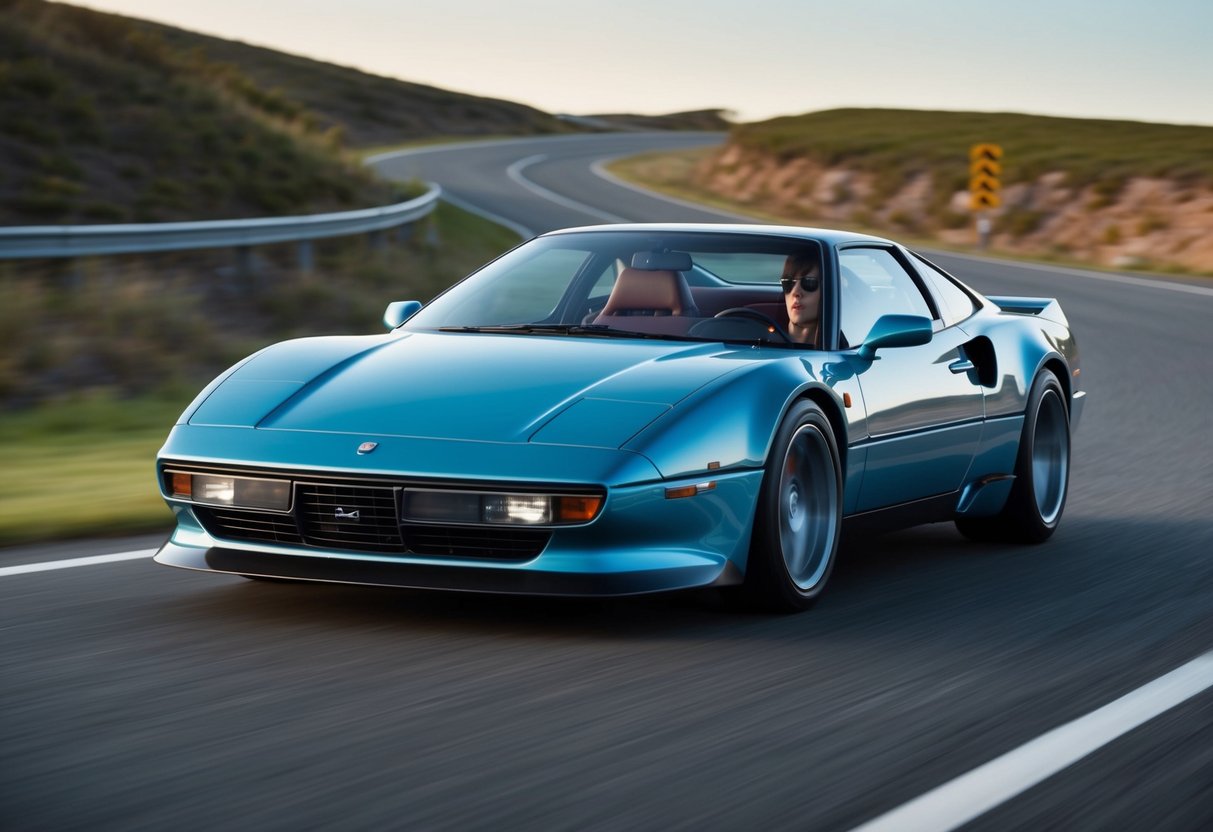
The 1980s was a golden era for sports cars, a decade that saw the emergence of some of the most iconic designs that still hold sway over car enthusiasts today. Models like the Ferrari Testarossa and Lamborghini Countach not only defined the era with their flamboyant styling but also set new standards for performance and engineering. These vehicles continue to mesmerize with their distinctive aesthetics and thrilling rides, making them timeless classics in the world of automotive history.
Car enthusiasts are often drawn to the characteristics that made ’80s sports cars so special: their bold colors, unique shapes, and groundbreaking technology. The Porsche 959 was not just a status symbol but a technological marvel that pushed boundaries in terms of speed and handling. Meanwhile, the Chevrolet Corvette C4 represented American ingenuity, offering an accessible yet thrilling driving experience that attracted a passionate following.
Exploring the myriad of sports cars from the ’80s offers a unique glimpse into the trends and innovations of the time. From the visceral roar of the engines to the daring designs, these cars captured the imagination by embodying a spirit of excitement and adventure. Whether it was the affordable thrill of a Mazda RX-7 or the luxurious drive of a BMW M3, each model has its own tale to tell in the larger narrative of automobile history.
Defining the Supercar of the 1980s
The 1980s supercar was defined by its engineering breakthroughs and iconic design language. Vehicles from this era showcased advancements in high-performance technology and aesthetics that captivated car enthusiasts and collectors.
Engineering Marvels and High Performance
The 1980s marked a revolutionary period for supercars, featuring groundbreaking advancements in engineering and performance. Turbocharging technology became a hallmark of the decade, pushing horsepower figures to unprecedented levels. These innovations allowed vehicles to achieve remarkable top speeds, setting new benchmarks for what was possible on the road.
Manufacturers focused on refining aerodynamics and handling. The use of lightweight materials, combined with powerful engines, resulted in cars that delivered exhilarating speed and precision. The emphasis on engineering excellence was a defining characteristic that set 1980s supercars apart from their predecessors.
The Aesthetics of Speed: Design Evolution
Car design in the 1980s embraced bold, wedge-shaped aesthetics that symbolized speed and power. This design language was not merely for visual impact; it played a crucial role in enhancing aerodynamic performance. Vehicles sported sharp angles, sleek profiles, and innovative styling cues, captivating the imagination of car lovers.
Supercars from this era often featured pop-up headlights and distinctive rear spoilers, which contributed to their unique appearance. The blend of form and function was pivotal, as designs were engineered to reduce drag and improve stability at high velocities. The 1980s remains a celebrated era in car design, influencing future generations of automotive aesthetics.
Game-Changing Innovations in Auto Technology

Automotive technology during the ’80s saw significant advancements that reshaped sports cars. Key developments included the transition to fuel injection systems and the use of advanced aerodynamics and materials.
The Leap to Fuel Injection
The 1980s marked a pivotal shift from carburetors to fuel injection systems in sports cars. This innovation allowed for more precise control over the air-fuel mixture, improving performance and efficiency. Fuel injection systems offered better throttle response and enhanced acceleration, which were crucial for sports cars seeking to deliver a thrilling driving experience.
Manufacturers like Porsche and Ferrari led this change, incorporating electronic fuel injection to optimize engine performance. This technology also contributed to meeting stricter emissions standards, which became increasingly vital during the decade. The transition to fuel injection paved the way for more sophisticated engine management systems in later years, laying the groundwork for modern automotive performance.
Advanced Aerodynamics and Materials
Another key innovation was the emphasis on aerodynamics and lightweight materials. Designers focused on reducing drag to enhance speed and stability, incorporating features like pop-up headlights that minimized airflow disruption. This not only improved performance but also contributed to the distinctive styling of ’80s sports cars.
The introduction of materials like carbon fiber was a game changer. Known for its strength and light weight, carbon fiber was used in key structural components to reduce overall vehicle weight without compromising strength. High-end manufacturers embraced these technologies to create cars that were not only faster but also more agile and responsive on the road. These advancements continued to influence automotive design well beyond the 1980s.



